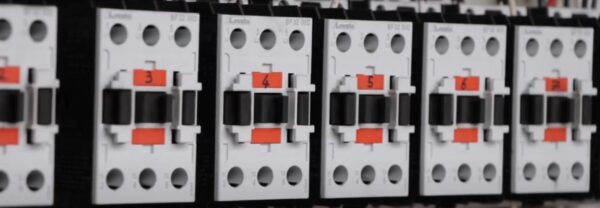 On the contactors the contacts are connected in series to increase the breaking capacity on DC loads; typically, more the load voltage increases, more contacts in series are needed to achieve an adequate breaking. The poles in parallel increase the current carrying capacity of the contactor. Take in consideration that the poles in parallel do not increase the breaking capacity; this in consequence of the construction tolerances that cause differences, although minimal, in the opening times of the various contacts in parallel. Practically the last contact that opens sustains almost completely the interruption.
On the contactors the contacts are connected in series to increase the breaking capacity on DC loads; typically, more the load voltage increases, more contacts in series are needed to achieve an adequate breaking. The poles in parallel increase the current carrying capacity of the contactor. Take in consideration that the poles in parallel do not increase the breaking capacity; this in consequence of the construction tolerances that cause differences, although minimal, in the opening times of the various contacts in parallel. Practically the last contact that opens sustains almost completely the interruption.
The parallel connection of the poles is typically used to increase the rated contact capacity when the load is switched on and off by other devices. For example,
in the control of resistors where the command is given by static devices and the contactor is used just to obtain the galvanic separation of the load.
Consider that the contacts connected in parallel can’t sustain a current value obtained by the rated current of a single contact multiplied per the number of
contacts in parallel. A de-rating must be applied to consider the non-perfect distribution of the current between the contacts in parallel.
We will have to consider for 2 contacts in parallel a multiple of 1.6, for 3 contacts 2.2 and for 4 contacts 2.8.
For example:
If we have a contact with a rated current in AC-1 category of 25A, connecting 3 poles in parallel the rated current is 25×2.2 = 55A.
____________________________________________________
Other information on this topic
Visit the website page dedicated to contactors.
Check out our video tutorials BF series contactors accessories.
